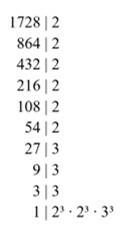Proportional division is widely used in situations related to Financial Mathematics, Accounting, Administration, profit sharing and losses proportional to the amounts invested by the partners of a certain company, by groups of investors in stock banks and accounts banking.
Examples
1 – Three partners must proportionally divide the profit of R$30,000.00. Partner A invested BRL 60,000.00, partner B BRL 40,000.00 and partner C BRL 50,000.00. What is the corresponding part of each?
Note the calculations:
When we add up the amounts that each one will receive, we should constitute a profit of R$30,000.
As we don't know the amount each one will receive, let's consider that:
A = x
B = y
C = z
Let's relate the x, y, and z to each other's investments for one reason:
Members will receive the following amounts:
A = BRL 12,000
B = BRL 8,000
C = BRL 10,000
2 – Four friends decided to buy a lottery pool. Each of the friends gave the following amount:
Carlos: BRL 5.00
Roberto: BRL 4.00
Peter: BRL 8.00
John: BRL 3.00
If they win the R$ 500,000.00 prize, how much will each friend receive, considering that the division will be proportional to the amount each one invested?

by Mark Noah
Graduated in Mathematics
Brazil School Team
Financial math - Math - Brazil School
Source: Brazil School - https://brasilescola.uol.com.br/matematica/regra-sociedade-divisao-proporcional.htm

